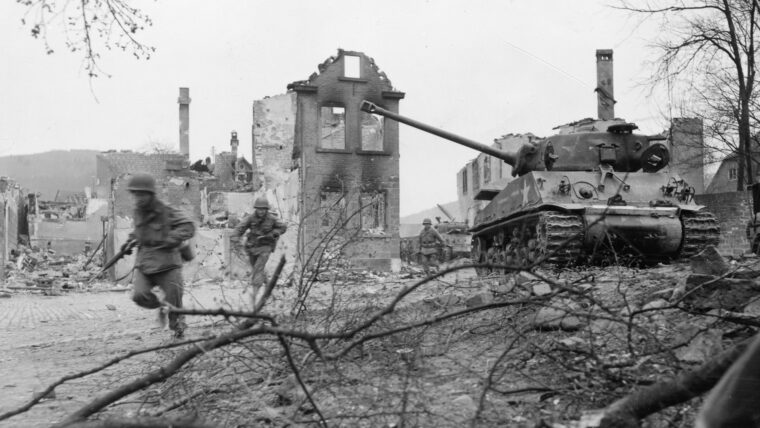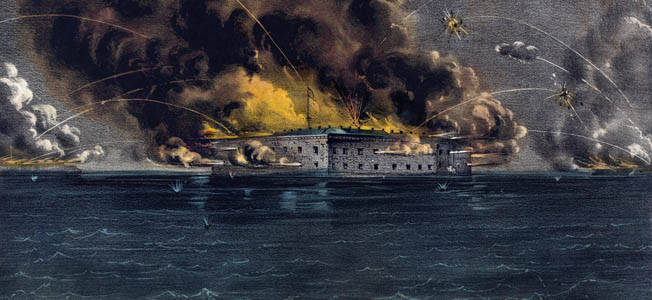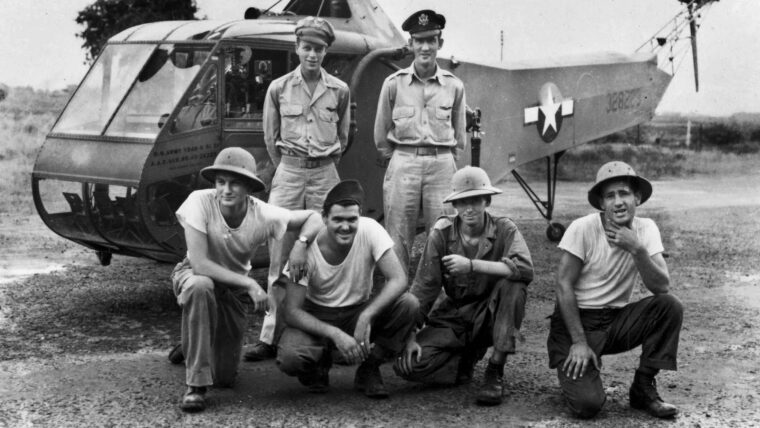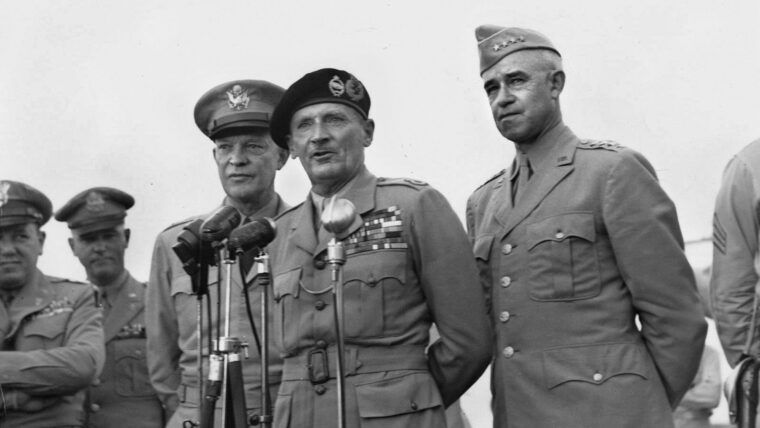
U.S. Army
The Scholarly Spies
By Tim MillerEarly in June 1940, refugees from northern France and the low Countries who had flooded Paris in May fled with the residents of the city as the German advance neared. Read more

U.S. Army
Early in June 1940, refugees from northern France and the low Countries who had flooded Paris in May fled with the residents of the city as the German advance neared. Read more

U.S. Army
According to contemporary Soviet news sources, fighter Ace Alexander Pokryshkin was the most famous pilot in the Red Air Force during World War II. Read more

U.S. Army
When Maj. Gen. Curtis Lemay, the hard-driving commander of the Twentieth U.S. Air Force based in Guam, decided to change tactics in early 1945 to boost the effectiveness of the B-29 Superfortress, it was the Bell Aircraft plant in Marietta, Georgia, that ultimately provided him with the stripped-down bombers that played such a key role in ending the war in the Pacific. Read more

U.S. Army
Far down on the list of important inventions essential to victory in World War II is a modest gadget built of stamped metal called the GI Pocket Can Opener—commonly known as the P-38 can opener—which was used by American troops in the field to sever the lids off combat rations. Read more

U.S. Army
They said it couldn’t be done. Doubters chided Henry Ford for declaring that his Willow Run Bomber Plant could turn out a B-24 Liberator heavy bomber every hour. Read more

U.S. Army
On January 17, 1945, as Allied forces prepared to descend on Germany itself and put an end to the war in Europe, an American tank battalion disappeared. Read more

U.S. Army
By Mike Haskew
Union General William T. Sherman was a friend and trusted subordinate of General Ulysses S. Grant, commander of all Union armies in the field during the Civil War. Read more

U.S. Army
One of the catalysts for a major rebellion in the United States were irregular warfare in “Bleeding Kansas” from 1854 to 1861 between anti-slavery Free Staters and pro-slavery border ruffians. Read more

U.S. Army
When it came to advanced military technology in World War II, arguably no one was better at it than Nazi Germany, whose scientists Adolf Hitler keep busy trying to invent the ultimate “super weapon” capable of defeating his enemies. Read more

U.S. Army
Early in 1944, German Field Marshal Erwin Rommel, the defeated hero of North Africa and now head of Army Group B in France, was tasked with strengthening the Atlantic Wall defenses against Allied invasion. Read more

U.S. Army
On September 14, 1939, Igor Sikorsky attained stability and control with the initial flight of an open cockpit test bed known as the VS-300. Read more

U.S. Army
The tennis-shoed soldiers emerged from the darkness on July 6, 1953, like a “moving carpet of yelling, howling men [with] whistles and bugles blowing, their officers screaming, driving their men” against the Americans as they swept up Pork Chop Hill (Hill 255), recalled Private Angelo Palermo. Read more

U.S. Army
The U.S. Marine Corps was not the only group of Americans facing off against the Chinese at the Chosin Reservoir. Read more

U.S. Army
“We had been assured by our officers before we invaded France in 1944,” recorded Bill Harris, “that our Sherman tanks could take care of any Nazi armor we met there.” Read more

U.S. Army
Victorinox, manufacturers of the world-famous Swiss Army knife, made a recent announcement that the Victorinox soldier knife is on the official order list of the U.S. Read more

U.S. Army
On October 20, 1944, General Douglas MacArthur redeemed his personal pledge to the people of the Philippines. Read more

U.S. Army
On the surface it may seem odd that men of conquered nations would eagerly sign up to fight for their masters, but that is exactly what happened in Scandinavia in the 1940s. Read more

U.S. Army
The very nature of war means that some participants will be killed and others will be wounded, and some estimate the deaths in WWII to be around 85 million. Read more

U.S. Army
It seemed like just another ordinary day at sea. Early on December 7, 1941, a U.S. Army-chartered cargo vessel, the 250-foot SS Cynthia Olson, under the command of a civilian skipper, Berthel Carlsen, was plying the Pacific waters about 1,200 miles northeast of Diamond Head, Oahu, Hawaii, and over 1,000 miles west of the Tacoma, Washington, port from which she had sailed on December 1. Read more

U.S. Army
With the exceptions of the Normandy invasion and the Battle of the Bulge, few other World War II battles in the European Theater have received more historical scrutiny than the Battle of the Falaise Gap. Read more